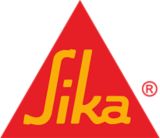
Sikaflex® SL 1
(formerly MSeal SL 1)
ONE-COMPONENT ELASTOMERIC, SELF-LEVELING POLYURETHANE SEALANT
Sikaflex® SL 1 is one component, non-priming, self-leveling elastomeric polyurethane designed for expansion joints in concrete floors and decks. Use it where flexibility as well as abrasion and puncture resistance are required.
- Movement capability of ± 35% allows expansion and contraction with joint movement
- Abrasion-resistant to provide for longer wearing and durability
- Easy to gun for quick installation
- Variety of types and sizes of packaging to help reduce jobsite waste
- No priming is needed on most surfaces, offering excellent adhesion
- Self-leveling, so no tooling is needed
- Wide application temperature range makes Sikaflex® SL 1 suitable for all climates
- Excellent weatherability for long-lasting performance
